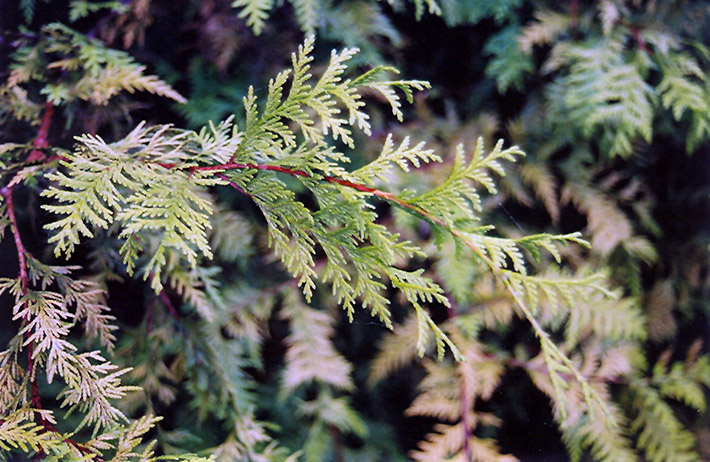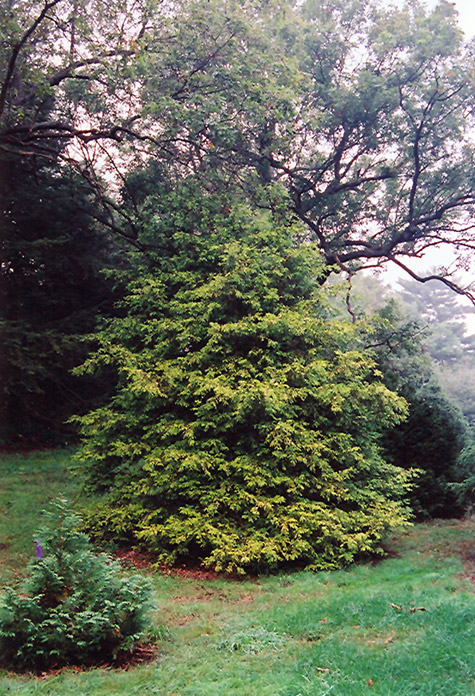>> Home
Andeley Whitecedar
Chamaecyparis thyoides 'Andeleyensis'
Height: 10 feet
Spread: 7 feet
Sunlight:
![]()
Hardiness Zone: 5a
Other Names: Whitecedar Falsecypress, Atlantic White Cedar
Description:
An old-fashioned heritage cultivar from France, featuring bright green evergreen foliage which turns bronzy purple in winter; compact mounded habit of growth, ideal as a specimen or for general garden use
Ornamental Features
Andeley Whitecedar is a dwarf conifer which is primarily valued in the landscape or garden for its distinctively pyramidal habit of growth. It has light green evergreen foliage. The scale-like sprays of foliage turn coppery-bronze in the fall, which persists throughout the winter. The furrowed gray bark adds an interesting dimension to the landscape.
Landscape Attributes
Andeley Whitecedar is a multi-stemmed evergreen shrub with a distinctive and refined pyramidal form. Its relatively fine texture sets it apart from other landscape plants with less refined foliage.
This is a relatively low maintenance shrub. When pruning is necessary, it is recommended to only trim back the new growth of the current season, other than to remove any dieback. It has no significant negative characteristics.
Andeley Whitecedar is recommended for the following landscape applications;
- Accent
- Vertical Accent
- Mass Planting
- Hedges/Screening
- General Garden Use
Planting & Growing
Andeley Whitecedar will grow to be about 10 feet tall at maturity, with a spread of 7 feet. It has a low canopy, and is suitable for planting under power lines. It grows at a slow rate, and under ideal conditions can be expected to live for 60 years or more.
This shrub should only be grown in full sunlight. It is quite adaptable, prefering to grow in average to wet conditions, and will even tolerate some standing water. It is particular about its soil conditions, with a strong preference for sandy, acidic soils. It is somewhat tolerant of urban pollution. Consider applying a thick mulch around the root zone in winter to protect it in exposed locations or colder microclimates. This is a selection of a native North American species.

